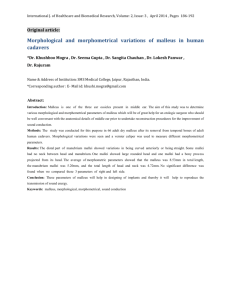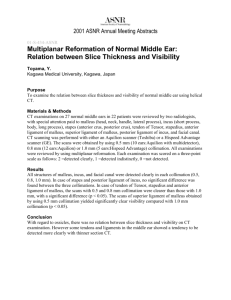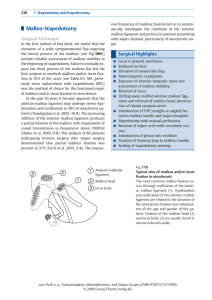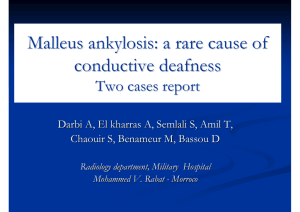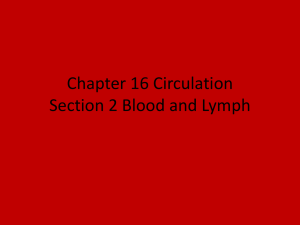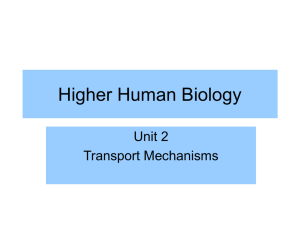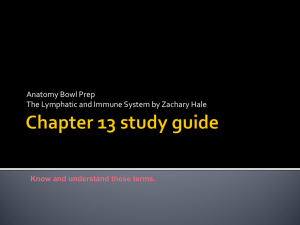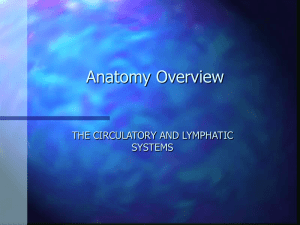MALLEUS
advertisement
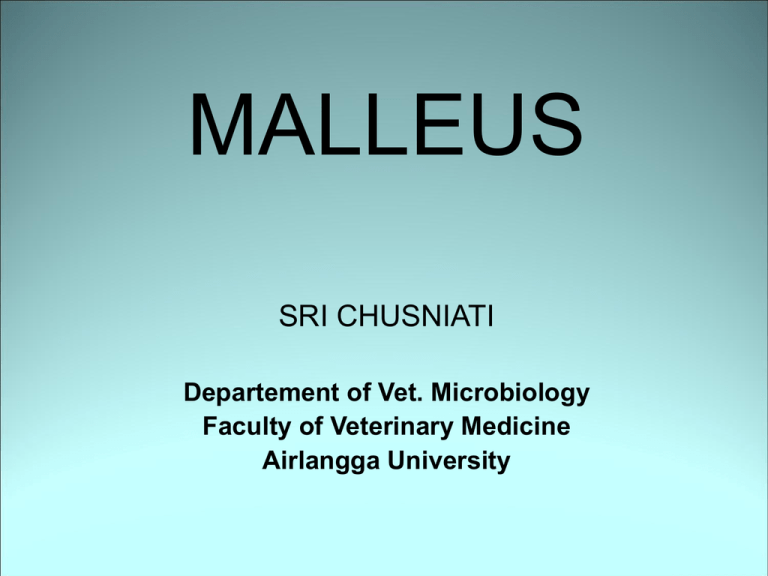
MALLEUS SRI CHUSNIATI Departement of Vet. Microbiology Faculty of Veterinary Medicine Airlangga University MALLEUS INGUS JAHAT GLANDERS FARCY ROTZ O : Eubacteriales F : Brucellaceae G : Malleomyces Sp : -Malleomyces mallei Malleus -Malleomyces pseudomallei = Pseudomonas pseudomallei Mellioidosis Caused : Malleomyces mallei = Pseudomonas mallei = Burcholderia mallei Sources of infection : secrete from nostril, excreta from chronic vulnus, saliva, tears, urine and feces Routes of infection : Oral Inhalation Skin wound The characterized of the disease : zoonotic, acute and chronic Majority host sensitive at horse and equidae Human : fatal at about + 95% if no handled Dog, cat, goat moderate sensitive Sheep, pig, cattle resistant guinea pig, mice as an animals experimental Morphology : Straight bacilli, pleumorphic, aerobic 0,3-0,5 um x 0,7-5 um Non motile Negative Gram Spore & capsule negative Easy growth at standard medium Biochemistry characterized : Indol, nitrate reduction, MR/VP negative H2S, NH3, Enzymes of : Catalase, oxidase and gelatinase positive Clinical symptoms Acute performs Fever, disphnoe Discharge from nostril at periodically Swelling at submaxillaris lymphoglandulae + painfull Cachexia to be died at 2 weeks Chronic performs Its too weak, cough, discharge from nostril, intermittent fever Swelling at submaxillaris lymphoglandulae Lesion/nodules in internal noose and skin farcy Pathology anatomy : Rhinitis catarrh purulent High degree infection rupture in septum nasi star spots Pulmo & pleura: gray's nest Cavum thorax : fibrins exudates Liver, lymph, testis caseous Swelling at submaxillaris lymphoglandulae specific Skin : ulcus & nodule as a lymph circulations to fall off their hairs & cicatrisation 3 kinds of malleus : Nose of malleus Lung of malleus Skin of malleus can be represented together Nose of malleus : Nodules at septum nasi obstruction on cavum nasi broke out mucopurulent secrete and ulcers. Swelling at submaksilaris lymphoglandulae If recovery Cicatrisation on skin substances with star perform Lung of malleus : Majority by adverse of nose malleus infection Nodules consist of pus & poly morfo nuclear (PMN) cell at the outer rings Chronic Skin substances damage and than they would be substitute with cicatrix skin substance TBC like perform Skin of malleus : Series Nodules perform at surface of lymph node circulation (systemic infection by lymph node circulations). Broke out perform ulcus/ulcera with pus excreta Pathogeneses: Inhalation rhinitis catharalis rhinitis purulenta eruption at mucous of nose. Proteolysis enzyme presented (bacteria) mucous irritation discharge nasal & ulcera. Ulcera sica “keropeng” (outer skin fall out) & cicatrisation perform cicatrisation with star perform/stella distribute to be nasopharynx tract cough. Bacteria in bronchus ulcer exudates auscultation examinations sounds of ronchi Oral digestives tract. Proteolytic enzyme mucous irritation ulcera bacteria distributed after insertion from blood circulation lymph node circulation predilection (lung & septum nasi). The bacteria avilable at discharge of nose, pus from the part of swelling body, saliva, tear of eyes, feces and urine. From skin vulnus (temporary) hematogen lymph node circulation nodules series at outer surface of lymph node circulation broke out ulcus & pus excreta, if the vulnus skin to be dried would be produced “keropeng”. Diagnosis : Clinical symptom Mallein test • Ophthalmic mallein test 2-3 drops of mallein saccus conjunctiva R/ + conjunctivitis purulent after 1-2 days. • Intra dermal test 0,1 cc mallein id measuring the thick of skin before injection and 12 hours after injection if > 60% + < 60% - the test have a negative result re-test in after 2-3 weeks from the first R/ + + malleus please to be killed - free from malleus If -Isolation and identification To be isolation from lesion & will be growth up on - Glycerin agar - Glycerin potato adverse examination by biochemistry test -Biologist test - intra peritoneal administrated against to guinea pig/ male mice orchitis -Serologist test Handling material (going to be laboratories) : infected animal (ante mortem) : serum → serologist Swab by sterile cotton of nasal discharge (pus) → bacteriologist test infected animal (post mortem) : Swelling organ substances (cavum nasi, lung, testicle, liver): - Still make it fresh - Growth up on Glycerin agar - Test by male guinea pig after injected intra peritoneal DD/. Nasal discharge Strangles = “ Ingus tenang” = Adenitis equorum = Droes c/ Streptococcus equi (Gram +) acute Curve of fever was specific illustrated : Initial of action at performing abscess on lymph node The peak of body temperature was presented The broke out abscess (spontaneous /chirurgic) declined body temperature gradual recovery Nodules and skin ulcers Epizootic lymphangitis / “selakarang” Histoplasma farciminosa (fungi) Ulceratif lymphangitis Corynebacterium pseudotuberculosis Melioidosis Pseudomonas pseudomallei distributed the biggest nodules (“bungkul bungkul”) Dourine Trypanosoma equiperdum “Dollar spot” predilection at mucose membrane Swelling lymph node Tbc Neoplasma Therapeutics : Its too difficult, because : Predilection at septum nasi The recovery process was to long term processed, with fatal implication Verry contagious No vaccination
